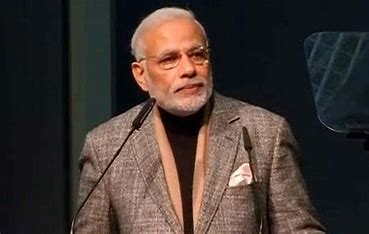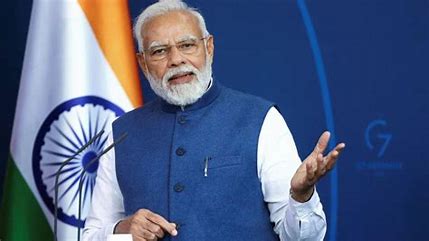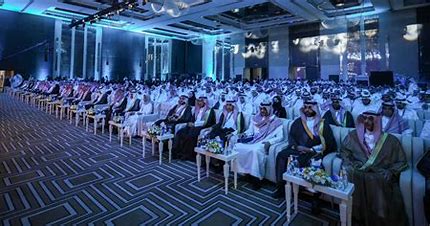
University education was considered such an essential instrument for nation building that soon after Independence that the government set up the University Education Commission (UEC) on 4 November 1948 under the chairmanship of Dr S. Radhakrishnan. The Commission was mandated to report on the health of university education and suggest measures for its improvement and further expansion. Prior to Independence, India had just 18 universities and about 500 colleges with a total enrolment of 205,768. Of all the universities, seven were teaching and eleven were teaching-cum-affiliating universities. While teaching universities were envisioned to focus on teaching and research in as many domains of knowledge as possible, the affiliating universities were contemplated to develop post-graduate and research departments only in areas where they had the capacity to achieve excellence. This was the time when India was facing problems of food insecurity on the one hand and health, infrastructure and other civic facilities on the other. Under the circumstances, among others, education and research in agriculture, medical and engineering had become an overriding consideration.
The government of India took note of the situation and set up the Sarkar Committee which recommended establishment of four Regional Higher Technical Institutions, on the lines of Massachusetts Institute of Technology (MIT), in different parts of the country. The government realised that these engineering institutions would flourish best if they had basic support of departments of exact sciences, humanities and social sciences. It is evident from the Indian Institute of Technology (IIT), Kharagpur Act, 1956 which provided for instruction and research in such branches of engineering and technology, applied sciences and applied arts, as the Institute may think fit, and for the advancement of learning and dissemination of knowledge in such branches. It signifies that IITs were not merely envisioned as premier technical institutions but much more than even being multi-faculty institutions of higher learning. It hardly needs any mention that universal expectation from pass-outs of any institution of higher learning is that the person should be an enlightened human being first and specialist second. That kind of evolution occurs only through an interdisciplinary approach of teaching and learning which has been callously undermined over the years due to inexperience of one class and ineptness of another resulting in massive fragmentation of higher education.
Concerns about fragmentation of higher education have been expressed even by earlier Commissions and Committees but with no success. Wood’s Despatch of 1854 enunciated the aim of education as diffusion of science, arts, literature, technology and philosophy. UEC (1948-49) stated that universities have to create men and women of letters, science, discoverers, inventors, poets and artists on the same campus. The Yashpal Committee (2009) warned against the tendency of cubicalisation of knowledge by way of continuing with the Humboldtian model of a university system fragmented with different structures of disciplines. The Committee emphasised the significance of universal approach to knowledge by way of designing porous boundaries across different domains of Knowledge.
Regrettably, the fragmentation of higher education in India started at a time when the world was moving towards dissolving the boundaries amongst various domains of knowledge. The concept of a university, which means a place where universal knowledge is freely sought and shared, has been incredibly compromised. It started from one state in the early seventies with the setting up of a single stream university which soon became a new norm in almost all the states. Today, we have universities focusing only on specific areas of study. There are about 35 technical universities, 25 medical universities, 23 national law universities apart from several others like Sanskrit university, Hindi university, Urdu university, teachers’ university, tribal university, children university, sports university, defence university, police university, marine university, railway university, petroleum university, etc. There is nothing extraordinary about all this, and alas we have not been able to bring out the best in those specific areas of study. On the contrary, in certain cases it turned out to be a huge mistake. Some of these universities for years could not take off until they switched over from their earlier agenda and developed as multi-faculty at last.
The concept of single stream university has been an ill-conceived initiative which defies the logic of a university as it compartmentalises the education system. This has been absolutely out of sync with what is happening elsewhere in the world. The trend of establishing exclusive universities does not seem to augur well for a holistic and integrated development of higher education as envisaged in National Education Policy (NEP), 2020. Already, the university system has gotten deprived by taking out of its purview major disciplines like technical, medical, agriculture and legal education by establishment of universities in these exclusive domains and many others. There is already a lot of concern that the university system is not effectively linked with the industry and other research setups. Any attempt at bringing further segregation of the university system in this regard may perhaps result in enhancing the detrimental influence on higher education and research. Since this trend seems to be advancing, the danger is that these exclusive systems do not deprive themselves of the formal universities in the areas of language, humanities, social sciences, mathematics, fine arts, etc.
NEP 2020 has taken note of the fragmentation of higher education though in a limited way, but it is still a welcome move. It has recommended that the overall higher education sector will aim to be an integrated higher education system, including professional and vocational education and that single-stream higher educational institutions will be phased out and that even engineering institutions, such as IITs, will move towards more holistic and multidisciplinary education with more arts and humanities programmes. But it would only partially address the disorder since it has recommended multidisciplinary education and not interdisciplinary education. Both are distinctly different. There are already a large number of multidisciplinary universities offering programmes in hundreds of different disciplines because there is no upper limit insofar as offering a number of programs is concerned but there are very few universities in the country that are offering interdisciplinary programmes which is the need of the moment.
All the leading universities of the world are now focusing on an interdisciplinary approach of teaching and learning. Consequently, they have designed curricular provisions that cut across different domains of knowledge. But most of our institutions are continuing with the compartmentalized structure of disciplines even when the explosion of knowledge is rapidly engendering sub-disciplines cutting across traditional subjects. When we deal with periodic table in chemistry we teach things like periodic law, positions of elements like sodium, potassium, zinc, etc, based on their atomic numbers and not about their applications in realm of life which would warrant integration of subject matters from the fields of geology, engineering, telecommunication, life sciences, medicine, etc. Likewise, when we teach organic chemistry we do not teach the chemistry of those molecules that affect our vision, smell, taste, touch and sound nor about the availability of those molecules in nature nor about the way the human body receives sensory information. Therefore, what is more important in today’s context is interdisciplinarity which is hardly discerned in teaching and learning across institutions of higher learning in the country.
Interdisciplinary research has become the most common means of scientific advancements. There are a number of research studies that suggest that major breakthroughs in frontier domains of knowledge can be achieved only if the system cultivates talents in different areas of study at the post-secondary stage of education. Recent trends of Nobel Prizes also reveal that the present generation of Nobel laureates are from amongst those who have been pursuing interdisciplinary research, for the new knowledge in present times lies at the intersections of different disciplines. It is understood that almost half of the Nobel Prize winners in medicine are those who come from multidisciplinary educational backgrounds. It is quite true in other cases as well.
It will take a long time and serious efforts to grapple with the issue of interdisciplinarity and to institutionalise this much-needed institutional reform. The time has come when we ought to make a serious effort like the one made by Prof Shaym Menon, the founder Vice-Chancellor of B.R. Ambedkar University, Delhi. One can learn a great deal from the processes involved in designing the courses and the way the students are introduced to the fundamentals of interdisciplinary approach in that university. It requires greater clarity about what is expected of our students in modern times and a courage to carry out a certain amount of experimentation. But the irony of the situation in which most of the university leaders find themselves today is the lack of vision in approaching the issue of interdisciplinarity and the lack of desire to change the status quo. The only concern in most of the cases is to hold on a happy and trouble-free tenure, which is deeply regressive.
It is quite likely that the finest brains from the same discipline think more alike than their counterparts from the other disciplines. And, when people look at problems from different angles they find innovative solutions, often figuring out how to mash up two seemingly unrelated ideas. This is what is being increasingly seen in many of the recent scientific advancements wherein new knowledge has emerged from the fringes of two or more disciplines and not from the centre of a particular discipline. The fact of the matter is that in the actual process of living, there are no clear-cut boundaries between experiences in different fields. Indian universities are badly in need of expert groups which can design curricular provisions and instructional materials from an interdisciplinary perspective. The bottom line is that interdisciplinarity in teaching and learning is the real pointer towards future education.
The writer is former Chairman, UGC. The views expressed are personal.
It is quite likely that the finest brains from the same discipline think more alike than their counterparts from the other disciplines. And, when people look at problems from different angles they find innovative solutions, often figuring out how to mash up two seemingly unrelated ideas.















